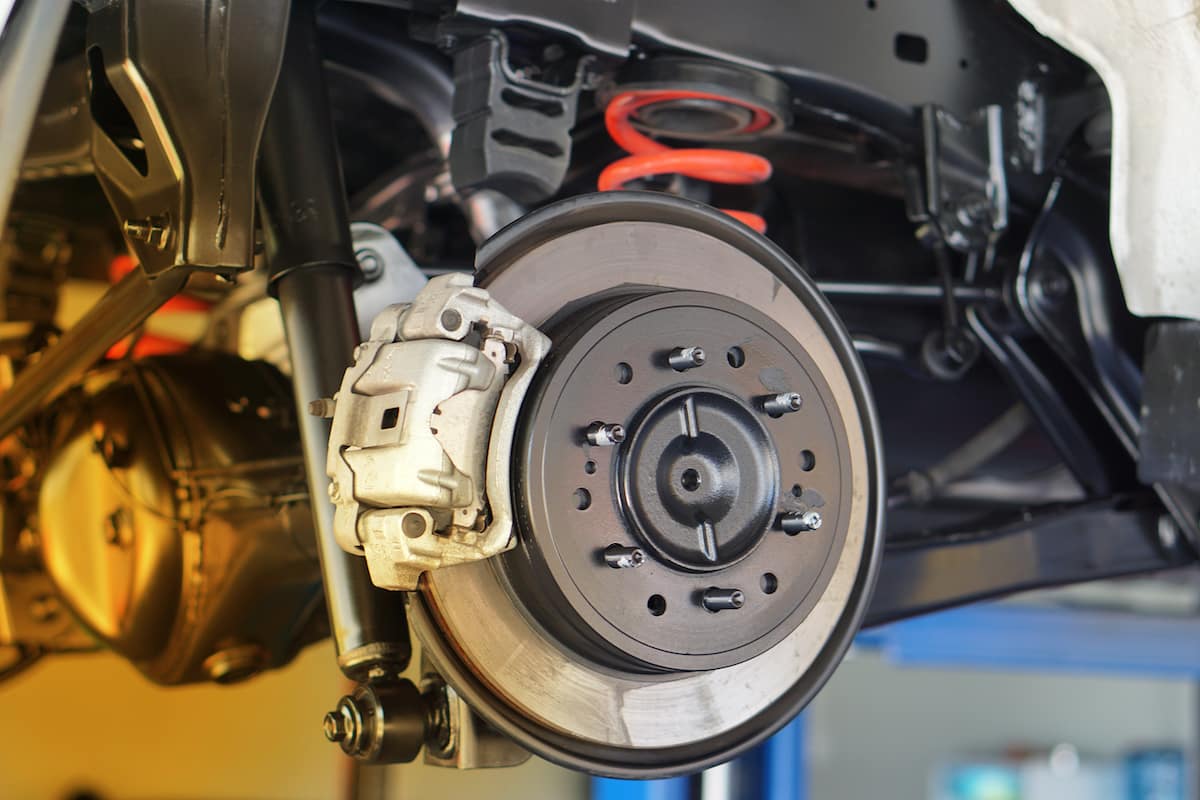Preventive maintenance is the key to keeping your vehicle’s brakes in top condition. Instead of responding to problems as they arise, follow the manufacturers’ recommendations. You can also keep reading to find out what you can do to keep brakes functioning safely and effectively
Brake Lines and Master Cylinder
Your brake system has five separate components, each of which needs regular attention. Brakes operate hydraulically, which means that fluid transfers the power from the brake pedal to the actual brakes. This power flow begins in the master cylinder. Your mechanic should regularly check your master cylinder and brake lines for damage, as a faulty cylinder won’t allow fluid to reach the brakes. Your mechanic should also ensure your brake fluid is clean.
Calipers, Rotors & Pads
After checking the master cylinder and brake lines, your mechanic should check the calipers, rotors, and pads. When you depress the brake pedal, the master cylinder moves the fluid to the calipers, which squeeze together to press down on the brake pads. The brake pads clamp down on the car’s rotor, slowing or stopping the vehicle. Damaged brake pads cannot make proper contact with the rotor and will be unable to slow the car. Further, it can damage the rotors.
By taking your car for routine maintenance visits, you can replace brake pads when they begin to wear out—before their performance suffers. If your brakes are squeaking or squealing, you likely need new brake pads.
Emergency Brakes
Also known as a parking brake, your emergency brakes work independently from your disc brakes and apply mechanical pressure to the wheels to stop the car from moving when parked. You can also use them in an emergency if your brakes fail. Depending on how often you use it, you may need to change your emergency brake every two years or 70,000 miles.
Anti-Lock Braking System
A regular feature in modern cars, the anti-lock braking system (ABS) prevents your brakes from locking up and restores traction and grip to your tires in an emergency. Instead of the car skidding and sliding when you hit the brakes, you can slow down sooner and maintain better control.
If the ABS warning light in your car comes on, your ABS has been disabled. You can still use your regular brakes, but your ABS has a malfunction and will not help you maintain traction and stability. This may result from a blown fuse or a damaged or dirty sensor, as well as from a faulty ABS controller or broken wire connecting the ABS controller and sensors.
Warning Signs
How do you know if your brakes need attention? When they are working correctly, you likely won’t think of them. Make an appointment with your mechanic promptly if you notice your brakes feeling mushy when you press the brake pedal or if the pedal or steering wheel shakes when you stop the vehicle.
If you hear strange noises or smell a burning odor coming from your car, your car is pulling to one side when you brake, or you notice any brake fluid spraying outside any of the wheels, get the brakes checked as soon as possible.
Maintenance Schedule
Sometimes brakes need attention between regular maintenance, but to minimize the likelihood of an emergency, check the recommended service for your car’s make and model. Alternatively, consider this general schedule:
Every 12,000 miles – Check brake fluid and brake pads. Pads need replacement when they wear down to 1/8 inch or less on the pad lining. Brake fluid should be replaced when dirty.
Every 25,000 miles – Flushing and replacing brake fluid, regardless of condition, is a good idea.
Every 60,000 miles – Rotors should be replaced or resurfaced to make them smooth.
Care for Your Brakes between Mechanic Visits
How can you extend the life of your brakes and minimize your chance of an emergency? Your driving habits have a large impact on your braking system, so keep lots of space between you and the driver in front of you to avoid the need to brake fast and hard. If you regularly pull a trailer or heavy loads, you will likely need to replace brake pads more frequently.
Stop-and-go traffic in the city places wear and tear on your brakes, while highway driving demands less of them. Similarly, if you drive on mountainous highways that require downhill braking, your brakes will wear out more quickly. Off-roading or driving on unpaved roads will also degrade brake components.
Ask your mechanic to use high-quality brake pads. While it might be tempting to save money by using cheaper versions, these won’t last as long. Further, some even place unnecessary wear on your rotors, which results in costly repairs down the road. Premium brake pads, on the other hand, can last 50,000 miles.
Have your tires rotated regularly to protect your braking system. A tire rotation helps tire treads wear down evenly, which means a single tire won’t have to work harder to build up friction.
Brake Maintenance Cost
Brake maintenance will not only keep you safe, but it will ultimately save you money. Installing new brake pads when they wear down and resurfacing rotors can cost from $100 to $300, while brake pad and rotor replacement could cost more than $1,000. Investing in routine maintenance can avoid the need for urgent, expensive repairs.
